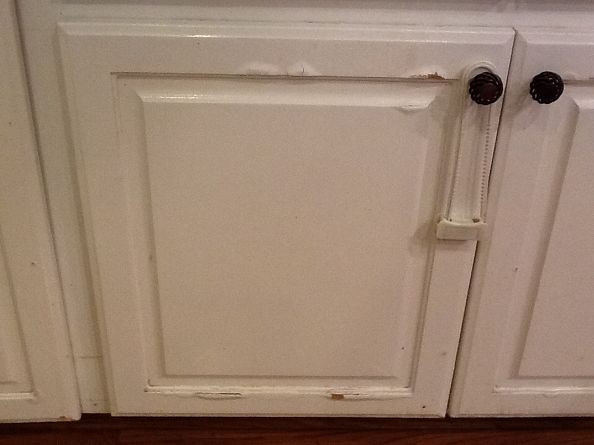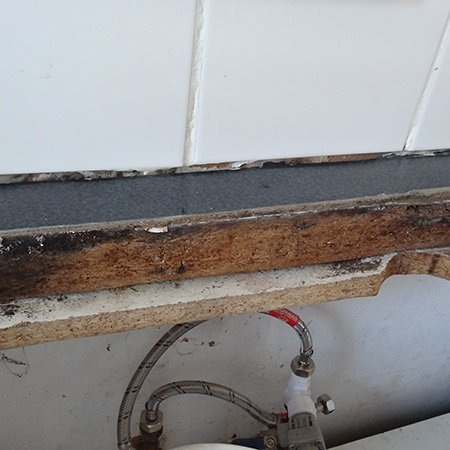Leading Causes of Water Damage in Kitchen
Leading Causes of Water Damage in Kitchen
Blog Article
Are you currently searching for ideas about How To Prevent Water Damage To Your Kitchen?

The kitchen is the room where a lot of water activity takes place. You can rarely do anything without making use of water in the cooking area, from cooking, cleaning, as well as doing the meals.
Therefore, examining your cooking area from time to time is a necessity. This is since it has a higher possibility of getting water damage due to the appliances you use there.
When faulty, these appliances that control water could make your kitchen messy and affect the structure of your building in the long run.
So, let's check out some causes of the water damage in the cooking area and also what you need to keep an eye out for.
Some Causes of Water Damages in the Cooking area
These are a couple of root causes of water damage in the kitchen area.
Faulty Kitchen Area Sink
The kitchen sink is a vital and most made use of part of the cooking area. For this reason it is prone to water damage; damages such as blocked pipes, dripping pipelines, as well as defective taps.
These problems can be frustrating, particularly when one is busy in the cooking area. It does not simply occur without giving an indicator or a hint. Here are some indicators to understand when your sink is not okay
These are the significant problems that can happen to your cooking area sink. However, one method to quit this damage is by making sure that food particles do not enter into the pipelines. You are likewise examining the taps and pipelines and also ensuring that it is correctly dealt with and also in good condition.
Leaking Dishwashing machine
Dish washers make life in the kitchen simpler. Nevertheless, it is an optional cooking area device and, when available, can be a source of water damage. Additionally, like various other equipments, it will certainly create faults in time, despite upkeep.
Among the mistakes is dripping through the door or underneath the dishwasher. These faults develop because of age, fractures, incorrect use, loosened web links to pipelines, and so on.
Mistakes due to age come from continuous usage. Because of this, the door leakages as a result of shutting and also opening up.
Additionally, mistakes from the incorrect use might create water damage by presenting cracks to it. It is advisable to follow the manual overview of the dish washer to stop this certain damages.
The leaks under the dishwashing machine can come from cracks in the gasket, hose, and loosened or incorrect connection to water pipes or drains.
This sort of leakage commonly goes undetected as well as can be there for a very long time. However, as a result of the moment framework, it might trigger and damage the flooring mold and mildew growth.
More so, the longer the water remains, you will certainly discover the warping of the flooring where the dishwasher is. This is an excellent indicator to watch out for when checking if your dish washer leakages. Detecting as well as fixing this promptly stops major water damage to your floor covering.
Faulty Drainpipe Pipeline
Drain pipes Pipes are necessary parts of our residences, especially in our restrooms and cooking areas. However, they obtain defective by obtaining blocked, cracked, as well as burst. Or worse, they can be mistakenly or loosely linked; whichever the case might be, it can be a severe issue.
Faulty drainpipe pipelines can trigger water damage and also, consequently, create mold development and also damage the appearance of your wall. It can additionally make the affected area look unpleasant.
It is suggested always to inspect to make certain that all the pipes are in good condition and also get a sound pipes system to keep and take care of any kind of issues.
Bottom Line
Keeping an eye out for problems in your kitchen can be charging yet necessary. It makes your work there much easier and also safer.
Nevertheless, the reasons detailed above are only a few elements to think about, particularly if your cooking area has a lot of home appliances.
So obtain a professional plumbing service to find around as well as look for any kind of damages and also get them fixed.
It makes your kitchen location damp and also unpleasant, especially when dripping from the pipes. And if it is dripping from the faucet, it leads to water wastage.
It is an optional kitchen appliance and, when available, can be a source of water damage. More so, the longer the water remains, you will certainly see the bending of the flooring where the dish washer is. Detecting as well as fixing this on time avoids major water damage to your flooring.
WAYS TO PROTECT YOUR KITCHEN FROM WATER DAMAGE
The kitchen is one of the most significant rooms in your house, as it is a multipurpose room wherein you can do your cooking and cleaning. Nowadays, homeowners tend to ignore the problems under their sink or appliances because of their busy schedules. However, most household floods occur due to plumbing and appliance failure. One of the most common scenarios that cause water damage to your kitchen is when the dishwasher malfunctions and floods gallons of water.
Water damage in your kitchen can cause several problems, including cosmetic damage, mold growth, and even an unpleasant smell. Often, if you fail to neglect the problem, there are always consequences. This article will help you protect your kitchen from water damage.
Common Causes of Water damage in your kitchen
Pipe problems are the most common source of water leaks under your sink. If homeowners ignore this issue, it will burst and flood the kitchen. Dishwasher leaks can be a source of water damage in your kitchen. An old, broken, and defective dishwasher can cause leaks, damage to your floor, and even mold growth. Refrigerator leaks can cause water damage in your kitchen, as sometimes melted ice from defrosting can cause leaks. Furthermore, if your refrigerator has internal problems, it is very likely to cause water damage. Back-splash and sink caulking can cause discoloration and water damage to your countertop tiles. Ways to Protect Your Kitchen From Water Damage
Regular maintenance
The most important thing you can do to protect your kitchen from water damage is to inspect the sinks, drains, and pipes, as well as the kitchen appliances, regularly. As with the sink, check for missing or deteriorated caulk. Remove the old caulk and clean the area thoroughly and re-seal it with fresh silicone. Furthermore, sweep the drain regularly, empty the filter and dispose of the debris in the garbage, and inspect the supply lines and valve for cracks.
Check your appliances
Check the user’s manual for instruction and proper use of every water-related appliance installed in your kitchen. For the dishwasher, check this procedure to prevent the dishwasher from flooding your kitchen. Check the appliances that need water, such as the coffee maker, ice maker, and water cooler, as they can become the cause of water damage in your kitchen. You may call a professional to check and repair damaged appliances and professional restoration for water damage clean-up.
Garbage clean-up
Fats, oil, and grease are common in the kitchen. Pouring them down the drain can cause clogs and sewage backup, which may result in significant kitchen water damage. If your kitchen sink is clogged, use a solution of hot water, baking soda, and vinegar to unclog the fats and oils in the pipes. Also, make sure to throw out the debris in the trash and clean the sink properly using paper towels for greases and oil and soap or bleach solution for the sink itself.
Shut off your water line
Make sure to shut off your main water line, especially if you're away and having some flood issue. As mentioned, dishwasher leaks are one of the most common culprits of water damage in the kitchen. So, make sure to only use the dishwasher if someone is at home and available to attend in case a problem arises.
Furthermore, it is also important that every member of your household knows where the shut-off valves are located. So in case of an emergency, they can mitigate the damage by turning off the water source.
Install leak detectors
One of the best ways to catch water damage before it could even cause serious damage to your home or business is by installing a water or leak detector. A leak detector monitors the flow of water through a pipeline, can detect moisture in the air for molds, and tracks the water temperature. Also, it can shut off your water line in case of an emergency. Install leak detectors under the kitchen sink, near the dishwasher and refrigerator.
https://superiorrestore.com/7-ways-to-protect-your-kitchen-from-water-damage/

We hope you enjoyed reading our excerpt on Water Damage in Kitchen. Thank you for taking a few minutes to read through our posting. Those who enjoyed reading our post please do not forget to share it. Kudos for your time. Please check our website back soon.
Estimating Report this page